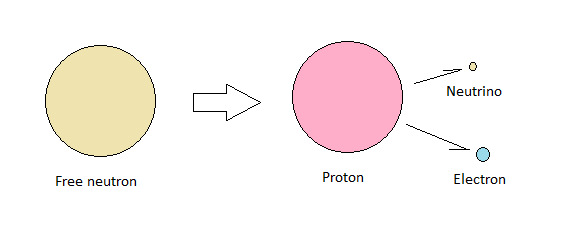Morton Spears' calculations on the relative sizes of neutrons, protons and electrons leave us with two separate ways to describe the size of particles. We have inertial mass, and we have particle quanta. Particle quanta can in turn be assembled into electrons and positrons which are real world particles that our theory sees as fundamental to matter.
It should be noted that Morton Spears' calculations are less exact than he made them seem. He ignores binding energy. His numbers are based on a best fit. There's substantial room for error. However, we can nevertheless rely on his calculations. We can use them as our starting point, and refine them as we look more closely into the structure of protons.
From previous calculations, we can start off with the following values, rounded off purposely to fit our theory:
- A proton is 1833 times more massive than an electron
- A proton consists of 305 electrons and 306 positrons; a total of 611
Our theory doesn't operate with the 16+ different types of fundamental particles that the standard model uses. Instead, we have 2. They are the electron and the proton. All other particles, with the exception of the neutrino, are assembles of electrons and positrons.
Particle fragments produced in collisions are subassemblies that can tell us something about the structures they came from, but they are not fundamental. From this, we can conclude that muons, created by smashing protons together, aren't fundamental particles. They are subassemblies.
High energy particles that enters Earth's atmosphere in the form of cosmic radiation are smashed to bits by atoms that they crash into. This produces a great number of muons that constantly bombard us. These particles are naturally occurring and easy to detect. A cloud chamber will reveal their existence.
However, these particles are no more fundamental to protons than fragments of a smashed brick wall are fundamental to brick walls. Fragments of wall contain bricks and mortar, which are fundamental, but the fragments are not fundamental themselves. Likewise, muons are made up of electrons and positrons that are fundamental to matter, but this doesn't make muons fundamental.
With this in mind, we can make some calculations related to the size of muons relative to protons. Wikipedia tells us that muons are roughly 207 times more massive than an electron. If we relate this number directly to the mass of the proton, we get 1833/207 = 8.86. However, muons are proton fragments. There's binding energy in the proton, which isn't in the fragments. It's therefore reasonable to round this number down to 8.
From this, we can conclude that 1 smashed proton should produce no more than 8 muons. If binding energy plays a big role in this, the number of muons produced from a proton may be lower. All we can say with confidence is that we should never see more than 8 muons produced from a single proton.
When we look closer at how muons are formed, we learn that they are not directly produced from protons. There's an intermediate stage. Protons are first broken into pions, and pions subsequently decay into muons.
Pions are 1.32 times as massive as a muon. With a muon roughly 207 times as massive as an electron, we get that the pion is about 273 times as massive as an electron. We can now repeat the above calculation to find how many pions we can get from a proton: 1833/273 = 6.71.
Given that 1 pion decays into 1 muon and 1 neutrino, we now know that protons cannot produce 8 muons. They can at most produce 6.
Pions and muons are fragments, originating from a proton. They are therefore unstable. They fall apart. However, they don't explode into a myriad of electrons and positrons, as we might suspect from our model. They fall apart in stages, with each stage producing a few fragments.
In the case of muons, they break into an electron or a positron, an electron neutrino and a muon neutrino. The neutrinos carry away a small part of the muon's mass while the electron or positron, as the case may be, carries away the majority of the muon's mass.
This doesn't add up with our theory because a proton consists of 305 electrons and 306 positrons. Distributed over 6 muons, we end up with about 51 electrons and 51 positrons for each muon. We must therefore propose some alternative explanation for what has been observed and measured trough experiments.
The alternative explanation is that we are in fact observing a myriad of electrons and positrons in the form of photon. Pion and muon decay is associated with a phenomenon know as bremsstrahlung. This is photon radiation that's taken out of the overall equation when considering how these particles decay. However, if we include this radiation as part of our equations, we'll likely end up with the 50 to 51 photons that we're missing in our calculations.
With this alternative interpretation of the phenomenon of bremsstrahlung, we're still able to defend our theory.
 |
| Electron-positron pair combining to form a photon |
















